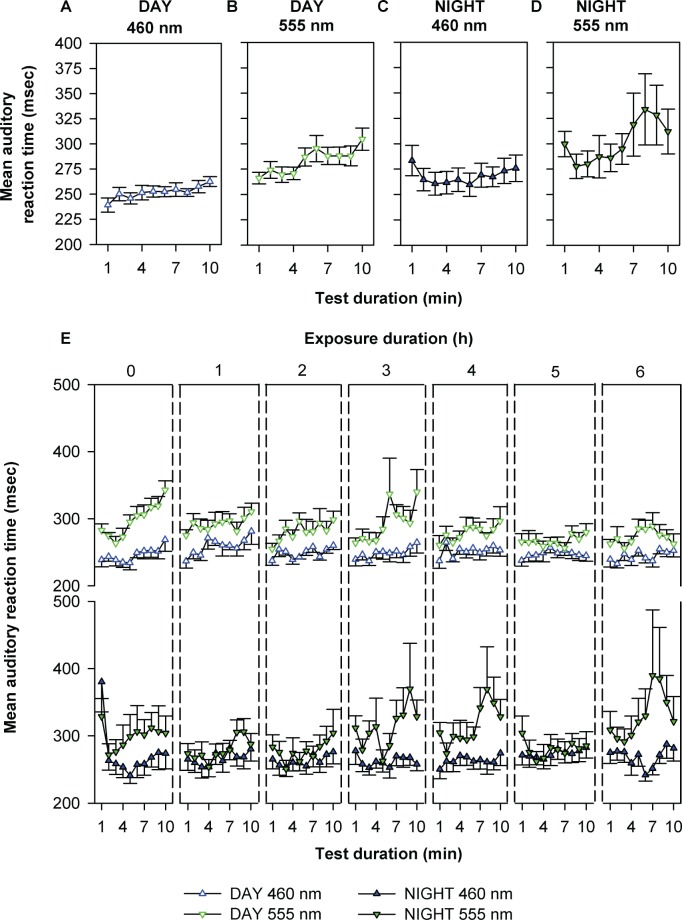Figure 3.
Temporal dynamics in auditory reaction time. The top panel shows the mean (± standard error of the mean [SEM]) reaction times for each min of the 10-min auditory performance task averaged over the entire light exposure during monochromatic daytime 460 nm (A), daytime 555 nm (B), nighttime 460 nm (C), and nighttime 555 nm (D) exposure. Data were subjected to one-way mixed-model analysis with restricted maximum likelihood estimation method (REML) with test duration as a fixed effect. Reaction times became significantly slower with increasing test-duration in all spectral conditions (A: P < 0.001; B: P < 0.0001; C: P < 0.003; D: P < 0.001). The rate of performance impairment, as determined by the slope of the linear regression of the profiles presented in A-D, were significantly different (P < 0.05) between conditions, with greater rates of impairment under daytime and nighttime 555-nm conditions than under daytime and nighttime 460-nm conditions. The bottom panel shows the effects of spectral condition, exposure duration, test duration, and diurnality (day versus night) on per min mean (± SEM) reaction times throughout the entire 6.5 h monochromatic light exposure period (E). Data were subjected to four-way repeated measures with random intercepts mixed-model analysis of variance with REML estimation. There was a significant effect of spectral condition, exposure duration, and test duration (P < 0.01). There was no significant effect of diurnality on reaction time or an interaction between spectral condition, exposure duration, and test duration on reaction time (P > 0.05; E). Performance appeared to be more impaired across the 6.5-h exposure duration during both day and night during the 555-nm exposure but not during the 460-nm exposure, which sustained per min reaction times at low levels throughout.

